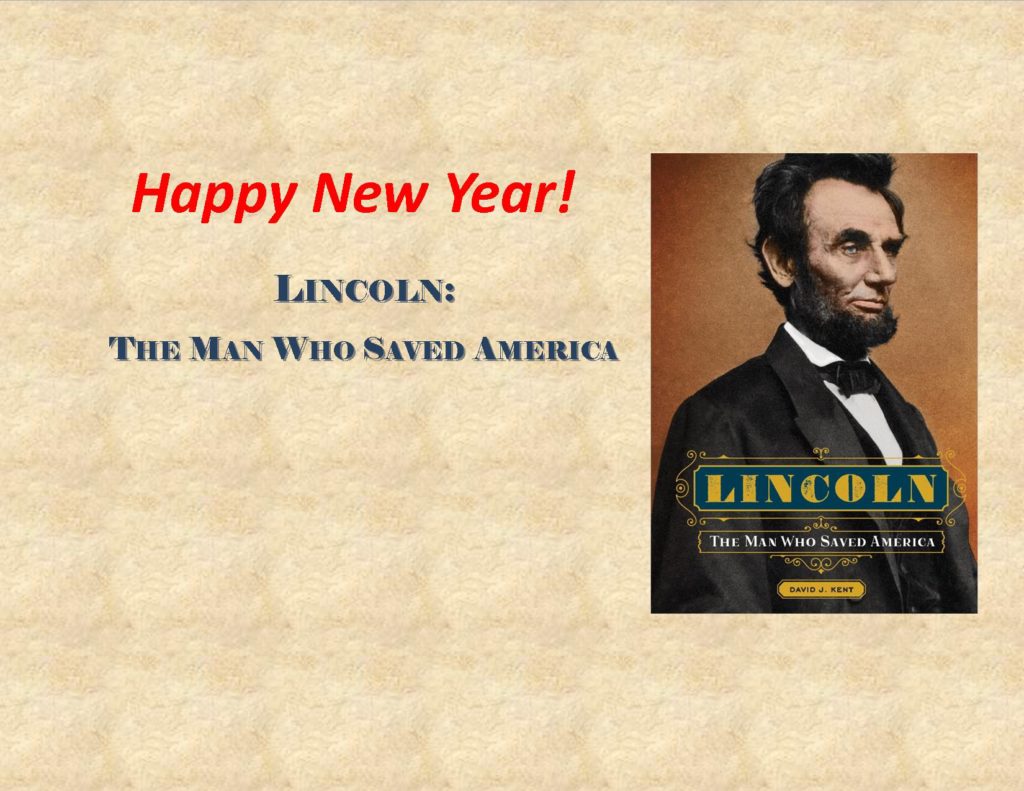
2 Comments
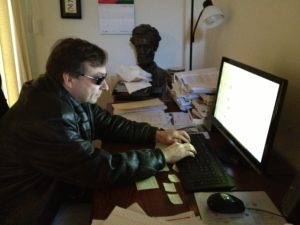 The writing life has kept me busy this past year. In fact, 2017 rivaled 2016 in productivity, especially given I took two long overseas trips (South Korea/China and Australia/New Zealand). [Did you know there are no monkeys in Australia?] In any case, these and past travels may end up in books some day. While traveling, I took advantage of long flights and sporadic internet access to get in some serious writing.
The writing life has kept me busy this past year. In fact, 2017 rivaled 2016 in productivity, especially given I took two long overseas trips (South Korea/China and Australia/New Zealand). [Did you know there are no monkeys in Australia?] In any case, these and past travels may end up in books some day. While traveling, I took advantage of long flights and sporadic internet access to get in some serious writing.
Last year I mentioned that, in addition to my Edison book hitting stores, I was working on a new book. Well, Lincoln: The Man Who Saved America came out in August and has been doing very well in Barnes and Noble stores nationwide. Reception from the public and other Lincoln scholars has been very positive and heartwarming, so I’ve been busy with book launch activities, including presentations at the DC Historical Society and the Lincoln Group of DC. [I’ve also just been voted onto the Board of Directors of the Abraham Lincoln Institute]
The writing continues. I have not one, but two, books in progress. One is an “accessible scholarly” book on Lincoln’s interest in technology; the other a travel memoir in the style of Bill Bryson, but with more science. And because that isn’t enough, in January I’ll be formally proposing a book in which members of the Lincoln Group of DC will contribute chapters. Stay tuned.
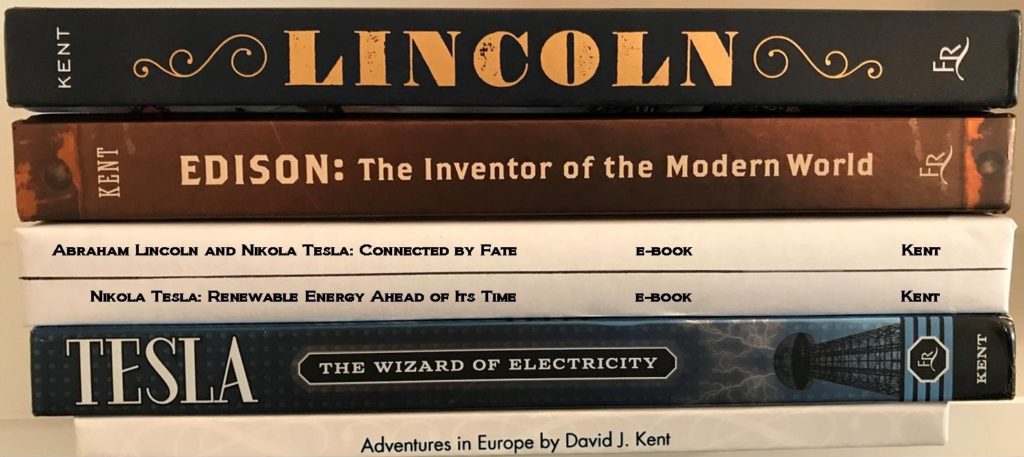
My previous books are also doing well. My Edison book is now apparently sold out at Barnes and Noble so I’m expecting a new printing in early 2018 (as well as one for Lincoln). I’ve already seen a Dutch translation (and now German) of Edison and expect others shortly. Even better news – my Tesla book is now into its 8th printing! It too has a Dutch translation, as well as German, Spanish, and now Czech. There may be others, so if you see a translation not listed please post a picture on my Facebook author page.
But there’s more. I wrote hundreds of blog posts here on Science Traveler (my official author page) as well as Hot White Snow (creative writing) and The Dake Page (science communication). I was also asked by the Chesapeake and Potomac Regional Chapter of SETAC to contribute an article on science communication for their fall newsletter. And I continue to write two book reviews per issue for the Lincoln Group of DC’s quarterly, The Lincolnian.
Like all good writers, I read a lot. This year I have read 116 books, surpassing last year’s total of 106 (which surpassed the previous year’s 96). I confess that I may actually cut back slightly in 2018 as I’m anticipating a heavy travel and writing year. We’ll see.
My mantra for 2018 is to Write!, Write!, Write!
Which reminds me, I’m off to write.
David J. Kent is an avid science traveler and the author of Lincoln: The Man Who Saved America, now available. His previous books include Tesla: The Wizard of Electricity and Edison: The Inventor of the Modern World (both Fall River Press). He has also written two e-books: Nikola Tesla: Renewable Energy Ahead of Its Time and Abraham Lincoln and Nikola Tesla: Connected by Fate.
Check out my Goodreads author page. While you’re at it, “Like” my Facebook author page for more updates!
Follow me by subscribing by email on the home page. Share with your friends using the buttons below.
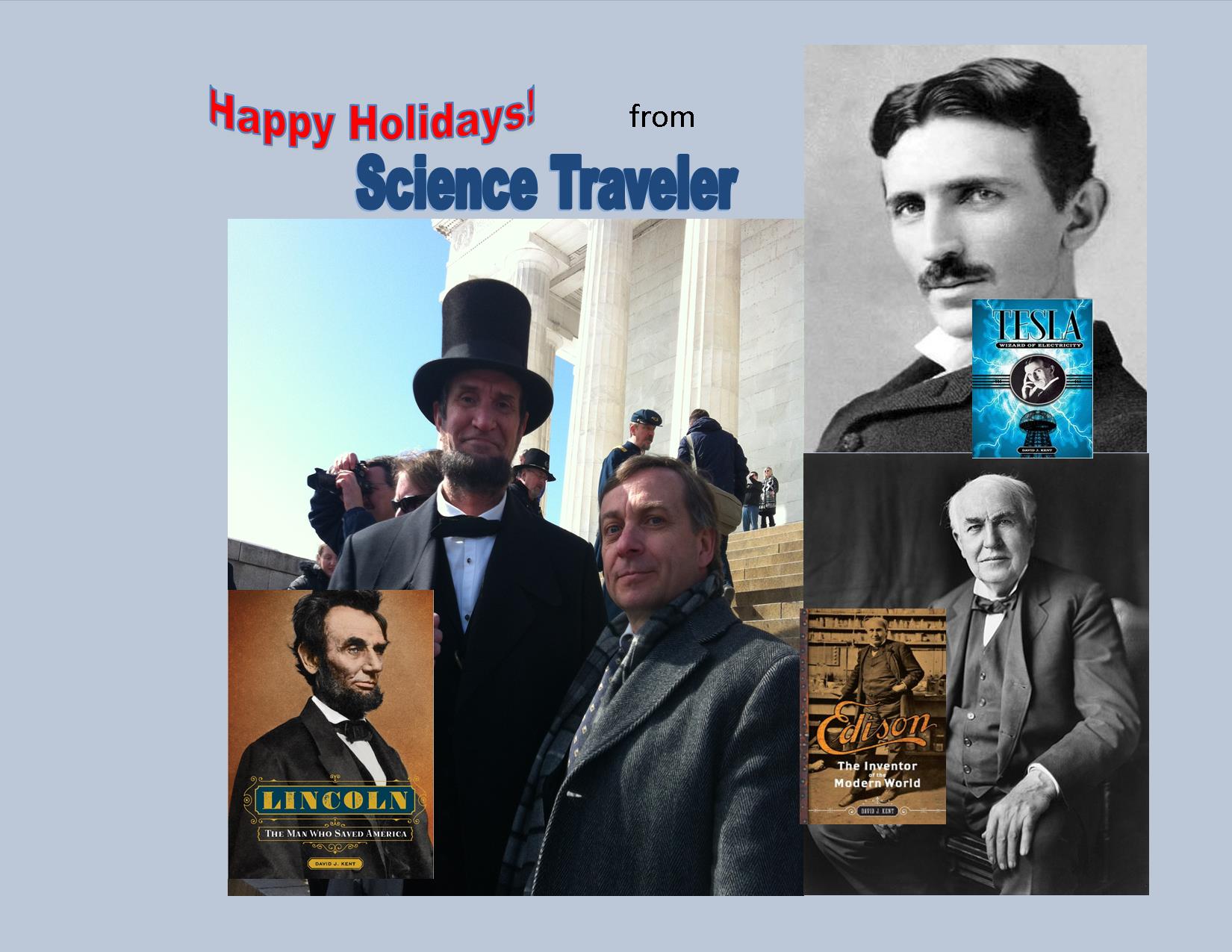
David J. Kent is an avid science traveler and the author of Lincoln: The Man Who Saved America, now available. His previous books include Tesla: The Wizard of Electricity and Edison: The Inventor of the Modern World (both Fall River Press). He has also written two e-books: Nikola Tesla: Renewable Energy Ahead of Its Time and Abraham Lincoln and Nikola Tesla: Connected by Fate.
Check out my Goodreads author page. While you’re at it, “Like” my Facebook author page for more updates!
Follow me by subscribing by email on the home page. Share with your friends using the buttons below.
There are no monkeys in Australia. None. I came to this realization as I was hiking through the Great Otway National Park in Victoria, along the Great Ocean Road. There were dozens of varieties of huge eucalyptus trees and prehistoric-looking cycads, perfect for frolicking monkeys. But not a monkey to be seen.

Koala (Not a monkey)
The continent has more than its fair share of marsupials, those pouch-bearing mammals that are iconic of Australia. There were bandicoots, bilblies, wombats, dozens of varieties of possum (including gliders), enough wallabies to start a circus (not to be confused with the flying Wallendas), and even Tasmania devils and marsupial moles. And let’s not forget the kangaroos in types ranging from rat to red, East and West grey, and antilopine (antelope-like). There are even a handful of tree kangaroos and the somewhat related monotremes that lay eggs (platypus and echidna).
Add to that the emus, cassowary, parrots, lorikeets, kookaburra, and a hefty variety of other odd-looking (and sounding) birds. Then there are the introduced species like rabbits (tons and tons of rabbits), sheep, cattle, deer, and flies. Especially flies.
But no monkeys.
About 260 species of monkeys inhabit the world. New world monkeys live in Central and South America; their prehensile tails and lack of cheek pouches being their most distinguishing features. Old world monkeys live in Asia and Africa. These lack the prehensile tails but have cheek pouches to store food. If you must get intimate with any particular monkey, feel free to check for rump pads and nostril presentation. Personally I’m sticking with the whether they have a tail or not.
Most monkeys are tropical, so the temperate rain forests of southern Australia would seem a good option. There are even cold-climate monkeys in northern Japan and the Himalayas, so there really is no excuse for their absence in Australia. Back in 1862, while the United States was distracted by the American Civil War, then Victoria Governor and patron of the sciences Sir Henry Barkly called for the introduction of monkeys into the colony’s forests “for the amusement of wayfarers, whom their gambols would delight.” Notwithstanding the obvious attraction of gamboling monkeys, Barkly was replaced as Governor before the idea caught on no monkeys were introduced.
By why aren’t they there naturally?
 The answer is a combination of timing and plate tectonics. At one time most of the continents were clumped together in what was called Pangea. But around 175 million years or so ago Pangea started to move apart. Given Australia’s position and movement away from the other land masses, and given that primates like monkeys are a relatively new evolutionary grouping (25 to 40 million years ago), there was no feasible way for monkeys (or monkey ancestors) to travel to the secluded island of Australia.
The answer is a combination of timing and plate tectonics. At one time most of the continents were clumped together in what was called Pangea. But around 175 million years or so ago Pangea started to move apart. Given Australia’s position and movement away from the other land masses, and given that primates like monkeys are a relatively new evolutionary grouping (25 to 40 million years ago), there was no feasible way for monkeys (or monkey ancestors) to travel to the secluded island of Australia.
Ah, but you say there were land bridges during the ice ages. So true. And this is how Australian Aborigines probably reached the continent about 60,000 years ago. But other primates didn’t make it that far. Orangutans, for example, can be found in Indonesia and Malaysia, but never quite made it as far as Papua New Guinea, and definitely not to Australia.

Scientists have identified a series of “Wallace Lines” (named for Alfred Russel Wallace, who wrote a paper suggesting much the same thing about evolution as Darwin was about to publish). Because of the positioning of the tectonic plates (Australia and Asia are on different plates), there were natural breaks that made transport difficult. That’s why there are no monkeys in Australia, and also why there are no kangaroos or other marsupials in Asia (the one exception to both rules could be the Indonesian island of Sulawesi, which sits in between the two continents).
My hike through the Great Otway National Park continued sans monkeys, but the majesty of the mountain ash (a kind of eucalyptus) made up for it. I didn’t see any monkeys, but I did get to admire the koalas and kangaroos. And that is what Australia is all about.

Lincoln: The Fire of Genius: How Abraham Lincoln’s Commitment to Science and Technology Helped Modernize America is available at booksellers nationwide.
Limited signed copies are available via this website. The book also listed on Goodreads, the database where I keep track of my reading. Click on the “Want to Read” button to put it on your reading list. Please leave a review on Goodreads and Amazon if you like the book.
You also follow my author page on Facebook.
David J. Kent is an avid science traveler and President of the Lincoln Group of DC and the author of Lincoln: The Fire of Genius: How Abraham Lincoln’s Commitment to Science and Technology Helped Modernize America and Lincoln: The Man Who Saved America.
His previous books include Tesla: The Wizard of Electricity and Edison: The Inventor of the Modern World and two specialty e-books: Nikola Tesla: Renewable Energy Ahead of Its Time and Abraham Lincoln and Nikola Tesla: Connected by Fate.
Sometimes Science Traveling takes me to distant lands and cultures, and sometimes it takes me closer to my own culture. This year was a little of both. I only took two major trips out of the country, but whoa, were they major. No more significant travel in the last twelve days of 2017, so here’s a recap.
First, the big trips.
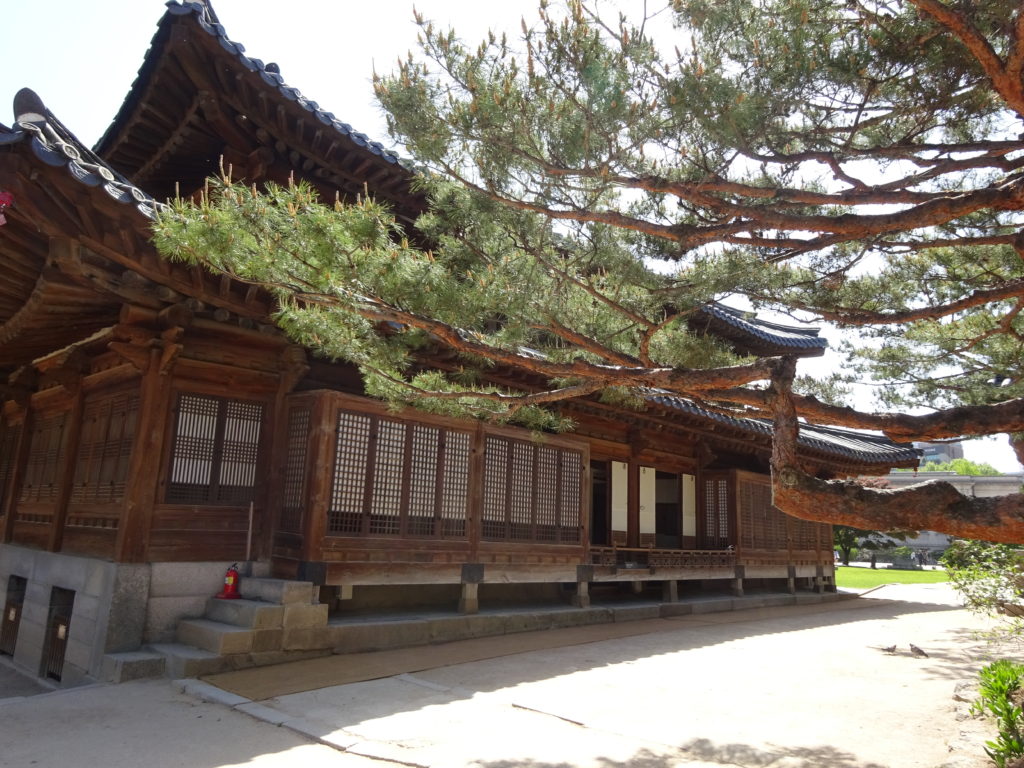
In May I flew to South Korea. Mostly there weren’t any missiles flying while I was on the ground (there were just before and after), so I was able to move around without much difficulty. After landing in Seoul I immediately hopped a train to Busan on the southeast coast. After a few days there I headed back to Seoul and even took a day trip up into the Demilitarized Zone (DMZ). An interesting experience to say the least. Even Seoul offered some excitement as I was there on election day; they were voting to replace the president who had been impeached (and who days before had been arrested for corruption). And yes, I took notes.
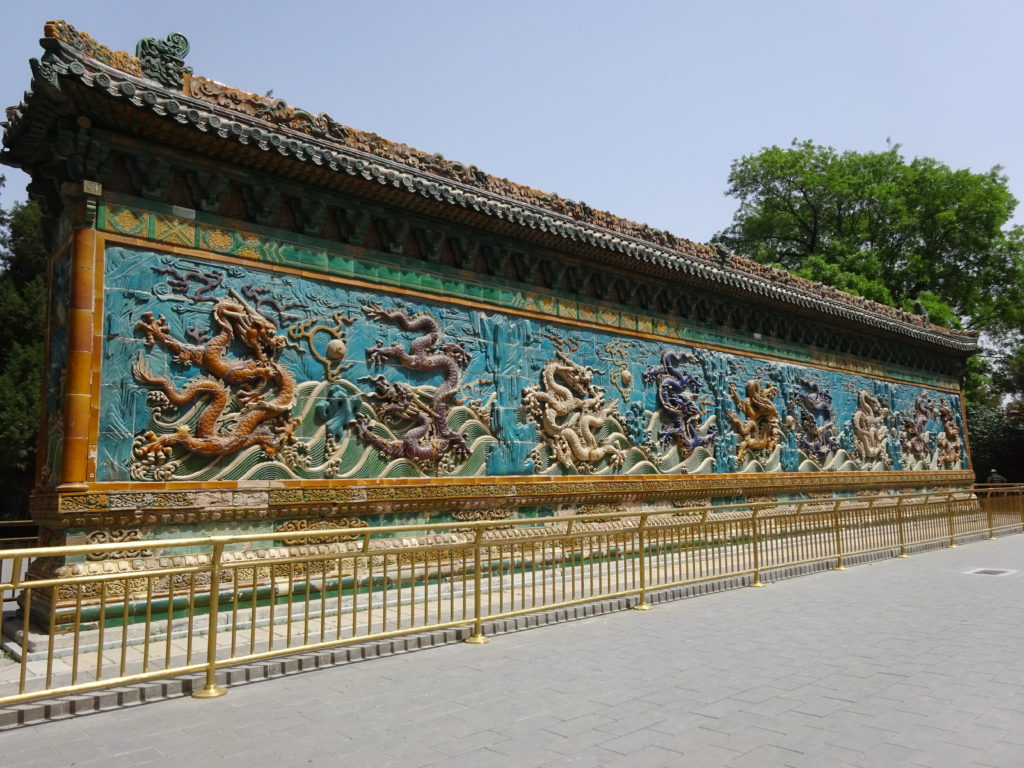
From South Korea I flew to Beijing. I’ve been there a couple of times before so had already seen the usual tourist traps. This time the temperature hit 100 degrees F to offset the first time I was there when it was -5 F. I checked out some local areas and visited the Bell and Drum Towers. Vladimir Putin and about 30 other world leaders were in town for a One Belt, One Road Summit, so the air was bright and clear (they close down the factories and ban cars). On the flip side, the Forbidden City was closed for a private tour of all the first ladies and every version of military uniform possible was parading the streets.
The next big trip was in October to Australia and New Zealand. First to Sydney (the famous bridge, the even more famous Opera House, and the at least locally famous Bondi Beach), then up to Cairns (Great Barrier Reef), then to Queenstown, New Zealand (fjord cruising), then back to Australia for Melbourne (12 Apostles), and finally up to Uluru (Ayer’s Rock). Day trips included hiking the Blue Mountains, checking out three different aquariums, and chasing the Lord of the Rings through the mountains of New Zealand. A trip of a lifetime.
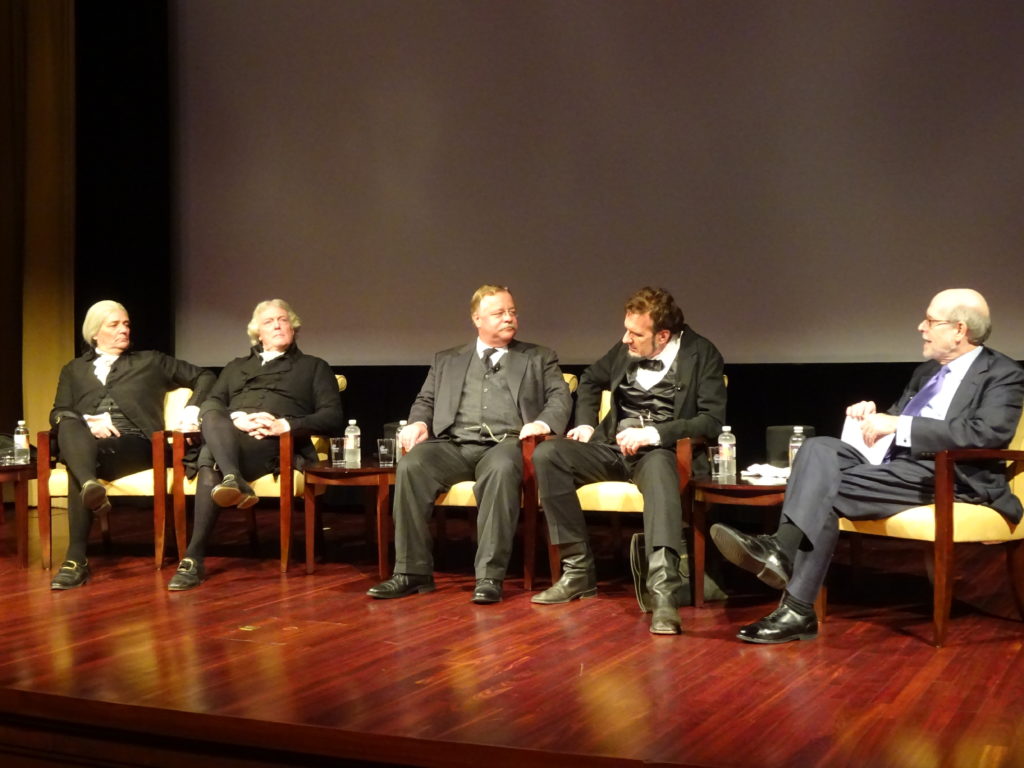
The rest of the year was spent on less adventurous trips. I attended the annual CPRC meeting in Annapolis (where I also went kayaking on a separate trip), the Lincoln Forum in Gettysburg, and then two trips up to Massachusetts (July and November). I also got to hang out with Abraham Lincoln (George Buss) and Teddy Roosevelt (Joe Wiegand). In fact, both men twice. In February they were joined by actors playing George Washington and Thomas Jefferson for a “Mt. Rushmore” night at the National Archives. Joe reprised his role for the Lincoln Group of DC in October with a tribute to Abraham Lincoln; George played Lincoln at the Gettysburg cemetery commemoration in November.
Overall there were fewer trips this year, but to farther places. I only managed to get to three new countries, which brings the total to something like 45 depending on how you count. If things work out the way I’m anticipating, next year could add up to eight, or even more, new countries visited. Now how do I get to Antarctica? Stay tuned.
David J. Kent is an avid science traveler and the author of Lincoln: The Man Who Saved America, now available. His previous books include Tesla: The Wizard of Electricity and Edison: The Inventor of the Modern World (both Fall River Press). He has also written two e-books: Nikola Tesla: Renewable Energy Ahead of Its Time and Abraham Lincoln and Nikola Tesla: Connected by Fate.
Check out my Goodreads author page. While you’re at it, “Like” my Facebook author page for more updates!
Follow me by subscribing by email on the home page. Share with your friends using the buttons below.
Another year and another set of acquisitions for my Abraham Lincoln book collection. This was a decent year for new books – 59 new additions. In contrast, last year I only acquired 43 new books, but 2017 was in line with the 59 and 60 books obtained in 2015 and 2014, respectively. My big year was the 98 books in 2013. So this year was about average, but acquisitions didn’t stop at books. I also purchased four new 7-shelf bookcases to set up a new office library.
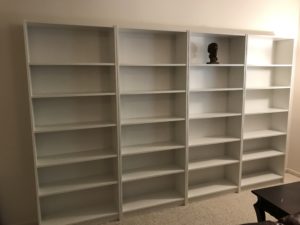
Nine of the new books were published in 2017. By far the most important one was my own book, Lincoln: The Man Who Saved America, which came out in August and has been enjoying good sales in Barnes and Noble stores nationwide.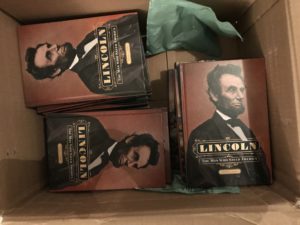
Other 2017 released books include the second volume of Sidney Blumenthal’s “Political Life of Abraham Lincoln” called Wrestling With His Angel (which I reviewed in the Lincolnian) and on Goodreads. There were also new books by Lincoln scholars Brian Dirck, James Conroy, Guy Fraker, and Jonathan W. White.
Two books looked at the importance of legendary photographers Alexander Gardner and Mathew Brady to our memory of the Civil War. Shooting Lincoln by J.C. Pistor came out this year while Richard Lowry’s The Photographer and the President came out in 2015. Both delve into the rivalry between Gardner and Brady and their relationship with helping make Lincoln great as well as document the destruction of the war.
On the flip-side, the oldest new acquisition was Henry Ketcham’s The Life of Abraham Lincoln, published in 1901. Close behind was Emanuel Hertz’s 1939 book, Lincoln Talks: A Biography in Anecdote.
Other great books include Charles Strozier’s Your Friend Forever: The Enduring Friendship of Abraham Lincoln and Joshua Speed, and the four-volume set of Legal Documents and Cases coming out of the Papers of Abraham Lincoln Project, edited by Daniel Stowell. I was also fascinated by Robert O’Harrow Jr.’s The Quartermaster about Montgomery C. Meigs.
As Vice President of Programs for the Lincoln Group of DC, I’ve had the privilege of inviting many of these authors to speak to us in person. Between the Lincoln Group, the Lincoln Forum, and other Lincoln organization events I’ve been lucky enough to get many of my acquisitions signed by the authors. Sixteen of my new acquisitions are signed, most directly to me.
I will admit that finding books is getting harder. New books tend to be expensive and older books tend to be either impossible to find or in terrible condition or priced out of my reach. With over 1100 titles in my collection, the number of books available that I already have also puts a cap on new acquisitions.
One last note: I’ve begun something I call the Abraham Lincoln Bibliography Project in which I plan to catalog the known books about Abraham Lincoln. I’ll include only actual books, not other documents and not pamphlets. As the website develops I’ll add a searchable database, book reviews, lists of books by topic (e.g., assassination, general biography, law career), and summary papers for those topics. The idea is to create a useful resource for both Lincoln researchers and the general public. Check out the blog and stay tuned.
See the 2017 list showing author/title/publication date below my signature blurb below.
David J. Kent is the author of Lincoln: The Man Who Saved America, now available. His previous books include Tesla: The Wizard of Electricity and Edison: The Inventor of the Modern World (both Fall River Press). He has also written two e-books: Nikola Tesla: Renewable Energy Ahead of Its Time and Abraham Lincoln and Nikola Tesla: Connected by Fate.
Check out my Goodreads author page. While you’re at it, “Like” my Facebook author page for more updates!
Follow me by subscribing by email on the home page. Share with your friends using the buttons below.
Here is the 2017 list:
| Physical Evidences: Investigation & Reconstruction of Physical Events | 2017 | |
| Acord, David | What Would Lincoln Do? | 2009 |
| Adams, Carl | Nance: Trials of the First Slave Freed by Abraham Lincoln | 2016 |
| Bain, David Haward | Empire Express: Building the First Transcontinental Railroad | 1999 |
| Bartelt, William E. | There I Grew Up: Remembering Abraham Lincoln’s Indiana Youth | 2008 |
| Berton, Pierre | Niagara: A History of the Falls | 1992 |
| Blumenthal, Sidney | Wrestling With His Angel: The Political Life of Abraham Lincoln 1849-1856 | 2017 |
| Brame, Charles w/illustrations by Soller, Edgar B. | Honestly Abe: A Cartoon Expose of Abraham Lincoln (Revised and Enlarged Edition) | 2000 |
| Brogan, D.W. | Abraham Lincoln (Great Lives) | 1935 |
| Chadwick, Bruce | 1858: Abraham Lincoln, Jefferson Davis, Robert E. Lee, Ulysses S. Grant, and the War They Failed to See | 2008 |
| Conroy, James B. | Lincoln’s White House: The People’s House in Wartime | 2017 |
| Cornelius, James M. and Carla Knorowski | Under Lincoln’s Hat: 100 Objects That Tell The Story of His Life and Legacy | 2016 |
| Cox, Hank H. | Lincoln and the Sioux Uprising of 1862 | 2005 |
| Crofts, Daniel W. | Lincoln & the Politics of Slavery: The Other Thirteenth Amendment and the Struggle to Save the Union | 2016 |
| Davis, Rodney O., and Wilson, Douglas, L. | The Lincoln-Douglas Debates (The Lincoln Studies Center Edition) | 2008 |
| Denney, Robert E. | Civil War Medicine: Care & Comfort of the Wounded | 1994 |
| Dirck, Brian | Lincoln in Indiana | 2017 |
| Farber, Daniel | Lincoln’s Constitution | 2003 |
| Foner, Eric | Reconstruction: America’s Unfinished Revolution, 1863-1877 | 1988 |
| Fraker, Guy C. | Looking for Lincoln in Illinois: A Guide to Lincoln’s Eighth Judicial Circuit | 2017 |
| Furguson, Ernest B. | Freedom Rising: Washington in the Civil War | 2004 |
| Grieve, Victoria | Ford’s Theatre and the Lincoln Assassination | 2005 |
| Hacker, Barton C. (Ed.) | Astride Two Worlds: Technology and the American Civil War | 2016 |
| Hertz, Emanuel | Lincoln Talks: A Biography in Anecdote | 1939 |
| Hirsch, David and Van Haften, Dan | The Ultimate Guide to the Gettysburg Address | 2016 |
| Irmscher, Christoph | Louise Agassiz: Creator of American Science | 2013 |
| Keeler, William Frederick, with Robert W. Daly (Editor) | Aboard the USS Monitor: 1862: The Letters of Acting Paymaster William Frederick Keeler, US Navy to His Wife, Anna | 1964 |
| Kent, David | Lincoln: The Man Who Saved America | 2017 |
| Ketcham, Henry | The Life of Abraham Lincoln | 1901 |
| Kigel, Richard | Becoming Abraham Lincoln: The Coming of Age of Our Greatest President | 2017 |
| Lee, Richard M. | Mr. Lincoln’s City: An Illustrated Guide to the Civil War Sites of Washington | 1981 |
| Leidner, Gordon | Conversations with Lincoln: Little-Known Stories From Those Who Met America’s 16th President | 2016 |
| Lowry, Richard S. | The Photographer and the President: Abraham Lincoln, Alexander Gardner, & the Images That Made a Presidency | 2015 |
| Martin, Fred J., Jr. | Abraham Lincoln’s Path to Reelection in 1864: Our Greatest Victory | 2013 |
| McCutcheon, Marc | The Writer’s Guide to Everyday Life in the 1800s | 1993 |
| Oehlerts, Donald E. (Compiler) | Guide to Wisconsin Newspapers, 1833-1957 | 1958 |
| O’Harrow, Robert Jr. | The Quartermaster: Montgomery C. Meigs, Lincoln’s General, Master Builder of the Union Army | 2016 |
| Paludan, Phillip Shaw | Victims: A True Story of the Civil War | 1981 |
| Phillips, Donald T. | Lincoln on Leadership for Today | 2017 |
| Pinkney, Andrea Davis | Dear Mr. President: Abraham Lincoln Letters from a Slave Girl | 2001 |
| Pistor, J.C. | Shooting Lincoln: Mathew Brady, Alexander Gardner, and the Race to Photograph the Story of the Century | 2017 |
| Schwartz, Thomas F. | Lincoln: An Illustrated Life and Legacy | 2009 |
| Searcher, Victor | Lincoln Today: An Introduction to Modern Lincolniania | 1969 |
| Silverman, Kenneth | Lightning Man: The Accursed Life of Samuel F.B. Morse | 2003 |
| Sloan, Eric | A Museum of Early American Tools | 1973 |
| Snow, Richard | Iron Dawn: The Monitor, the Merrimack, and the Civil War Sea Battle That Changed History | 2016 |
| Stowell, Daniel (Editor) | The Papers of Abraham Lincoln: Legal Documents and Cases (4 vols) | 2008 |
| Strozier, Charles B. | Your Friend Forever, A. Lincoln: The Enduring Friendship of Abraham Lincoln and Joshua Speed | 2016 |
| Stuckey, Sterling | Slave Culture: Nationalist Theory & The Foundations of Black America | 1987 |
| Swanson, James L. and Weinberg, Daniel R. | Lincoln’s Assassins: Their Trial and Execution | 2001 |
| Titone, Nora | My Thoughts Be Bloody: The Bitter Rivalry That Led to the Assassination of Abraham Lincoln | 2010 |
| Tooley, Mark | The Peace That Almost Was: The Forgotten Story of the 1861 Washington Peace Conference and the Final Attempt to Avert the Civil War | 2015 |
| Trindal, Elizabeth Steger | Mary Surratt: An American Tragedy | 1996 |
| Tyler, David B. | The Wilkes Expedition: The First United Sates Exploring Expedition (1838-1842) | 1968 |
| Varhola, Michael J. | Everyday Life During the Civil War: A Guide for Writers, Students and Historians | 1999 |
| Ward, Geoffrey C. | Lincoln’s Thought and the Present | 1978 |
| White, Jonathan W. | Abraham Lincoln and Treason in the Civil War: The Trials of John Merryman | 2011 |
| White, Jonathan W. | Midnight in America: Darkness, Sleep, and Dreams During the Civil War | 2017 |
| White, Richard | Railroaded: The Transcontinentals and the Making of Modern America | 2011 |
Get it in time for the holidays! And get shipping for FREE!
You can have a signed copy of Lincoln: The Man Who Saved America without having to pay a shipping fee.
Check out a Preview and the Table of Contents here.
Through December 10th shipping fees will be waived. Just pay the price of the book and I’ll ship it anywhere in the continental United States for free.
Go to my “Buy the Books” page to order now!
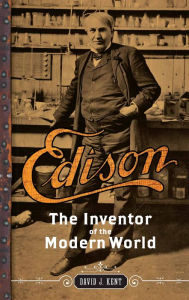
The same terms apply to my Edison: The Inventor of the Modern World book!
[Sorry, Tesla books temporarily out of stock. Check back in January.]
David J. Kent is the author of Lincoln: The Man Who Saved America, now available. His previous books include Tesla: The Wizard of Electricity and Edison: The Inventor of the Modern World (both Fall River Press). He has also written two e-books: Nikola Tesla: Renewable Energy Ahead of Its Time and Abraham Lincoln and Nikola Tesla: Connected by Fate.
Check out my Goodreads author page. While you’re at it, “Like” my Facebook author page for more updates!
Follow me by subscribing by email on the home page. Share with your friends using the buttons below
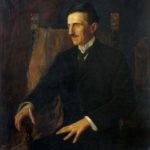 Rotating magnetic fields, alternating current motors and transformers, the Tesla coil, wireless transmission of radio communication, wireless lighting…Nikola Tesla had no shortage of inventions that he could call his own. But these were not the only inventions in which he dabbled. Besides his wireless radio communication and alternating current systems, and like other great inventors from da Vinci to Edison, Tesla was intrigued by a great many other issues. One such issue to which he gave a great deal of thought was the relationship between matter and energy. Late in life he even claimed to have developed a new dynamic theory of gravity, though the details of his theory were never presented. One thing was clear, however, Tesla did not think Albert Einstein had gotten it right when he introduced his theories of relativity: “Tesla continuously attacked the validity of Einstein’s work,” his first biographer John O’Neill would write, “he ridiculed the belief that energy could be obtained from matter.”
Rotating magnetic fields, alternating current motors and transformers, the Tesla coil, wireless transmission of radio communication, wireless lighting…Nikola Tesla had no shortage of inventions that he could call his own. But these were not the only inventions in which he dabbled. Besides his wireless radio communication and alternating current systems, and like other great inventors from da Vinci to Edison, Tesla was intrigued by a great many other issues. One such issue to which he gave a great deal of thought was the relationship between matter and energy. Late in life he even claimed to have developed a new dynamic theory of gravity, though the details of his theory were never presented. One thing was clear, however, Tesla did not think Albert Einstein had gotten it right when he introduced his theories of relativity: “Tesla continuously attacked the validity of Einstein’s work,” his first biographer John O’Neill would write, “he ridiculed the belief that energy could be obtained from matter.”
 Einstein, of course, received the Nobel Prize in Physics in 1921 “for his services to theoretical physics, and especially for his discovery of the law of the photoelectric effect.” While he is probably best known for his development of “the world’s most famous equation, E = mc2,” Einstein’s greatest contributions were in reconciling the laws of classical mechanics with the laws of electromagnetic fields. He believed that Newtonian mechanics did not adequately accomplish this reconciliation, which led to his special theory of relativity in 1905. Extending this concept to gravitational fields, Einstein published his general theory of relativity in 1916. The following year he applied the general theory to model the structure of the universe as a whole.
Einstein, of course, received the Nobel Prize in Physics in 1921 “for his services to theoretical physics, and especially for his discovery of the law of the photoelectric effect.” While he is probably best known for his development of “the world’s most famous equation, E = mc2,” Einstein’s greatest contributions were in reconciling the laws of classical mechanics with the laws of electromagnetic fields. He believed that Newtonian mechanics did not adequately accomplish this reconciliation, which led to his special theory of relativity in 1905. Extending this concept to gravitational fields, Einstein published his general theory of relativity in 1916. The following year he applied the general theory to model the structure of the universe as a whole.
To vastly oversimplify, general relativity provides for a unified description of gravity as a geometric property of space and time. One key feature is that space-time is both curved and a function of the energy and momentum of matter and radiation. This is why light is bent around planets and other celestial bodies as it is influenced by their gravitational fields. It is also why time passes more slowly the closer the clock is to the source of gravitation (or conversely, why astronauts on a mission to points outside our solar system would return much younger than if they had remained on Earth).
Undeterred by the worldwide preeminence of such a man as Einstein, Tesla, at the ripe old age of eighty-two, wrote that he was fortunate enough to work out “two far reaching discoveries.” One was a dynamic theory of gravity, which he said “explains the causes of this force and the motions of heavenly bodies under its influence so satisfactorily that it will put an end to idle speculation and false conceptions, as that of curved space.” The “idle speculation” of curved space was, of course, one of the key features of Einstein’s general theory of relativity. Tesla argued that Einstein’s theories were nothing more than “magnificent mathematical garb which fascinates, dazzles and makes people blind to the underlying errors.”
Tesla’s other far-reaching discovery was a physical truth that he felt could best be expressed by the statement:
“There is no energy in matter other than that received from the environment.”
He argued that no theory could
“explain the workings of the universe without recognizing the existence of the ether and the indispensable function it plays in the phenomena.”
The presence of the ether—the unseen medium between all the bodies of the universe—had already been contested by many scientists, including Einstein. Instead of the ether, Einstein inserted his own space-time construct that allowed space to curve around gravitational bodies. Tesla disagreed with Einstein, saying:
I hold that space cannot be curved, for the simple reason that it can have no properties. It might as well be said that God has properties. He has not, but only attributes and these are of our own making. Of properties we can only speak when dealing with matter filling the space. To say that in the presence of large bodies space becomes curved is equivalent to stating that something can act upon nothing. I, for one, refuse to subscribe to such a view.
The question was not inconsequential—if the ether existed then the speed of light would not be constant, it would vary depending on the forces of the celestial bodies. Experiments carried out by Albert Michelson and William Morley in 1887 had already shown that the ether actually did not exist, notwithstanding Tesla’s insistence many decades after this to the contrary.
Still undeterred, Tesla believed that he had discovered what came to be known as “Tesla waves,” which would move faster than the speed of light. He argued that the propagation of currents from his magnifying transmitter—“a peculiar transformer specially adapted to excite the Earth”—would begin with “a theoretically infinite speed” and then later “proceeds [sic] with the speed of light.” But that would not be the end as “from there on it again increases in speed, slowly at first, and then more rapidly,” eventually passing through the Earth to a point diametrically opposed to it “with approximately infinite velocity.” Needless to say this was a direct contradiction to Einstein’s demonstration that the speed of light is a constant and that nothing can travel faster than the speed of light, at least in a vacuum.
Whether Tesla could have provided some additional insight to Einstein’s thinking on relativity if he had presented his views many years earlier, we will never know. In the end it was Einstein whose theories were written down, underwent scrutiny, and are generally accepted today.
[The above is an adaptation from my book Tesla: The Wizard of Electricity.]

Lincoln: The Fire of Genius: How Abraham Lincoln’s Commitment to Science and Technology Helped Modernize America is available at booksellers nationwide.
Limited signed copies are available via this website. The book also listed on Goodreads, the database where I keep track of my reading. Click on the “Want to Read” button to put it on your reading list. Please leave a review on Goodreads and Amazon if you like the book.
You also follow my author page on Facebook.
David J. Kent is President of the Lincoln Group of DC and the author of Lincoln: The Fire of Genius: How Abraham Lincoln’s Commitment to Science and Technology Helped Modernize America and Lincoln: The Man Who Saved America.
His previous books include Tesla: The Wizard of Electricity and Edison: The Inventor of the Modern World and two specialty e-books: Nikola Tesla: Renewable Energy Ahead of Its Time and Abraham Lincoln and Nikola Tesla: Connected by Fate.
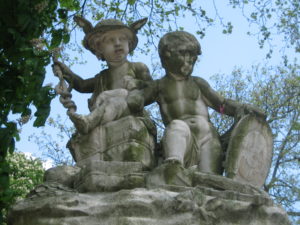 I’ve been writing periodic posts cataloguing my previous three-year secondment to Brussels. Check out the series here. It’s been a while since I’ve posted but the saga of jumping through hoops to work in Europe continues.
I’ve been writing periodic posts cataloguing my previous three-year secondment to Brussels. Check out the series here. It’s been a while since I’ve posted but the saga of jumping through hoops to work in Europe continues.
At this point, I had been running around town fulfilling the fantasies of bureaucrats. Over a few days I had:
1) Gotten a medical exam from the only doctor in Washington DC approved by the Belgian government for “official” exams (there are only 7 in the entire US). The odd thing was the doctor seemed like he was old enough to be in medical school around the turn of the century – the LAST century (1900). I literally was reviewing CPR procedures in my head while he was examining me in case he were to suddenly keel over. It was a close call but both of us escaped from the room upright.
2) Gotten a chest X-ray at a separate medical office to prove I didn’t have anything I was going to spread to the Belgians. A blood sample went to a third lab for analysis. Apparently they don’t want my deadly germs spreading to “the old countries.” Perhaps they remember Columbus.
3) Returned two days later to the doctor to pick up my signed and stamped medical certificate, which I then had to run up to the Belgian Embassy (one of the benefits of working in DC is that just about everything needed is right here). Given that the Embassy was only 3/4 mile from the nearest Metro stop (and the fact that all the taxis were on strike that day), I decided to walk there and back. Naturally it started to rain just as I left and continued until just after I returned….and I hadn’t brought along an umbrella because there wasn’t any rain in the forecast. Oh well. I was a bit damp but the trek was successful.
4) Running out again to the now defunct Ritz Camera to get two ID photos taken for my passport visa. I’m not particularly photogenic and the photographers seem to capture that deficiency well.
5) Sending all of this along with my CV, copies of my college diplomas, copies of every single page (even the blank ones) of my passport, and a few other pieces of paper to the Brussels office so I can get a work permit. [Of course, I still couldn’t get that until the FBI ran a background check on the fingerprints I had taken a couple of weeks before.]
Once the work permit was issued I had to take that up to the Belgian Embassy again to get my visa. Once I (finally) got to Brussels I had more paperwork to do in order to get a residency card. That excruciating process that had to be repeated every year for my three years there. Anyone who thinks America’s bureaucracy is burdensome needs to live in Europe to appreciate just how easy we have it in the states.
I began to see why some immigrants to my own country choose to take their chances bypassing the official procedures….you could grow old waiting for all the paperwork to be filed. And I’m only going over for a few years. And I was working for the same firm, just changing offices.
But it was worth it.
More to come.
David J. Kent is an avid science traveler and the author of Lincoln: The Man Who Saved America, now available. His previous books include Tesla: The Wizard of Electricity and Edison: The Inventor of the Modern World (both Fall River Press). He has also written two e-books: Nikola Tesla: Renewable Energy Ahead of Its Time and Abraham Lincoln and Nikola Tesla: Connected by Fate.
Check out my Goodreads author page. While you’re at it, “Like” my Facebook author page for more updates!
Follow me by subscribing by email on the home page. Share with your friends using the buttons below.
 Now that Thanksgiving weekend has passed, it’s time to think about Christmas, Hanukkah, and Kwanzaa. And now you can have a signed copy of Lincoln: The Man Who Saved America without having to pay a shipping fee.
Now that Thanksgiving weekend has passed, it’s time to think about Christmas, Hanukkah, and Kwanzaa. And now you can have a signed copy of Lincoln: The Man Who Saved America without having to pay a shipping fee.
Through December 10th shipping fees will be waived. Just pay the price of the book and I’ll ship it anywhere in the continental United States for free.
Go to my “Buy the Books” page to order.
The book has been selling fast in Barnes & Noble stores and is currently out of stock in the B&N warehouse. So until a new printing is available your options are to run quickly to your local B&N to see if they have any on the shelves, or click on over to my “Buy the Books” page to order a signed copy direct from me.
I’ve been running around a lot on the Lincoln circuit this past few weeks, e.g., see some photos here and here and here.
Next up – I’ll be giving a presentation at a luncheon of the Lincoln Group of DC on December 10th at Maggiano’s Restaurant in Washington DC. Check out the Lincoln Group website to join us.
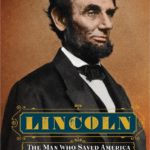 And don’t forget to go to my “Buy the Books” page to order Lincoln: The Man Who Saved America with FREE Shipping in the continental United States. Now through December 10th.
And don’t forget to go to my “Buy the Books” page to order Lincoln: The Man Who Saved America with FREE Shipping in the continental United States. Now through December 10th.

The same terms apply to my Edison: The Inventor of the Modern World book!
[Sorry, Tesla books temporarily out of stock. Check back in January.]
David J. Kent is the author of Lincoln: The Man Who Saved America, now available. His previous books include Tesla: The Wizard of Electricity and Edison: The Inventor of the Modern World (both Fall River Press). He has also written two e-books: Nikola Tesla: Renewable Energy Ahead of Its Time and Abraham Lincoln and Nikola Tesla: Connected by Fate.
Check out my Goodreads author page. While you’re at it, “Like” my Facebook author page for more updates!
Follow me by subscribing by email on the home page. Share with your friends using the buttons below